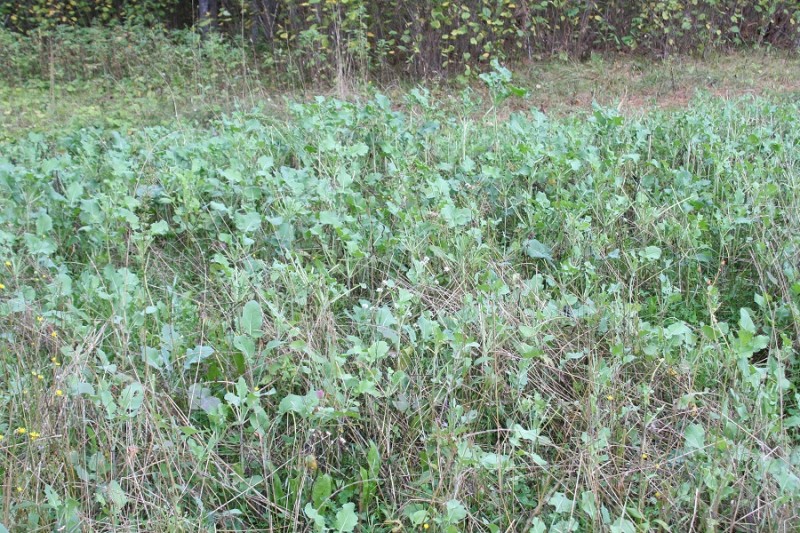3 Methods for Making a Poor Man’s Food Plot
Bernie Barringer 06.25.15

Not everyone owns hundreds of acres of great deer hunting land. It seems like many of the major whitetail hunting magazine and TV shows have forgotten about the working man, the weekend warrior who loves to hunt but will most likely never have the funds to buy and manage a property just for deer hunting.
I’m one of those guys. I don’t have a tractor with all the equipment necessary to create great food plots of several acres in size. But I do have some tricks up my sleeve. I’ll explain three low-budget food plots I have used to create a place where the deer are likely to be found feeding during the hunting season.
Rake-a-plot
Food plots do not have to be several acres in size. In fact, small ones have several advantages. With cover close by, mature bucks feel more comfortable feeding in a small plot tucked away in the woods than they do in an open field. This means they will more likely be found there during daylight.
A small clearing in the woods can be turned into a food plot with about a day’s worth of manual labor. If the ground cover is heavy in the clearing, you can spray it with a glyphosate-type weed killer such as Roundup. I rent a small sprayer to pull behind my ATV, but you can do this by hand. Come back two weeks later and all the vegetation is brown and dead. Then it’s a matter of taking a garden tiller to it or just spading it up.
Seeds can be spread by hand or with an ATV spreader. Then you just rake them into the ground and let nature take its course. For summer feed designed to keep the deer in your area, clover works well. Brassicas such as turnips, forage rape and radishes are a good choice for planting in the summer so they are in their prime during the hunting season. Winter-hardy oats like Buck Forage Oats mixed in will still be attractive to the deer until deep snow covers them.
The throw-and-grow cornfield foot plot

The rake-a-plot method mentioned above can be done on private land you have permission to hunt on (in fact, most states have no restrictions on planting food plots in existing clearings—even on public land). But the cornfield food plot is going to take some understanding by the landowner.
Here’s how it works. Turnips are relished by deer, and deer love them most when a frost has made them more palatable. For the best timing, they should be planted in July. You can choose an area in a corn or bean field near your treestand and hand-seed turnips right into the crops. Walk down the rows of corn and spread the seed on the ground, then rake it in. It will sprout and grow slowly until the corn is harvested; then it becomes the most favorable food in the area and it’s right in front of your stand.
Some farmers want to till the ground the moment their corn comes out, and that can be an issue unless you can talk them into leaving a small section through the hunting season. Even when chisel-plowed, many of the turnip plants and bulbs will be available to the deer.
Fruit and mast trees

Most people do not think of planting fruit trees or nuts trees as a food plot, but it’s a great way to share with the next generation. I have often said that I don’t plant trees for myself anyway—I plant them for those who come after me. Once again, there are normally no restrictions on planting trees even on public lands. A couple of apple trees planted in a small clearing in the forest can create a deer hunting gold mine in only five years. Deer love pears, even more than apples. They will survive mild winters but do not do well where temperatures stay below freezing for months at a time.
Oaks, hickories and chestnuts are very attractive to deer but they take longer to start producing. If you plant trees as big as you can carry to plant without any kind of machinery, you are still looking at close to a decade before they become a hub of activity for the deer in that area. But once they do, the deer are drawn to them like magnets when the nuts are falling.
So don’t feel like you need a big tractor and a bunch of farm machinery to improve the land where you hunt. Whether you hunt public or private land, you can increase your odds of bagging a deer by creating these simple, “poor man’s” food plots.
Follow Bernie’s bowhunting adventures on his blog, bowhuntingroad.com.

